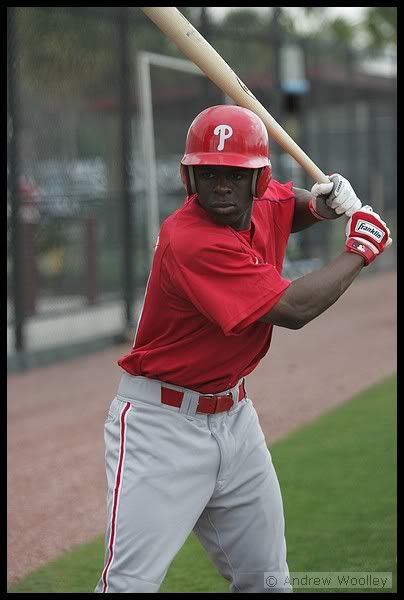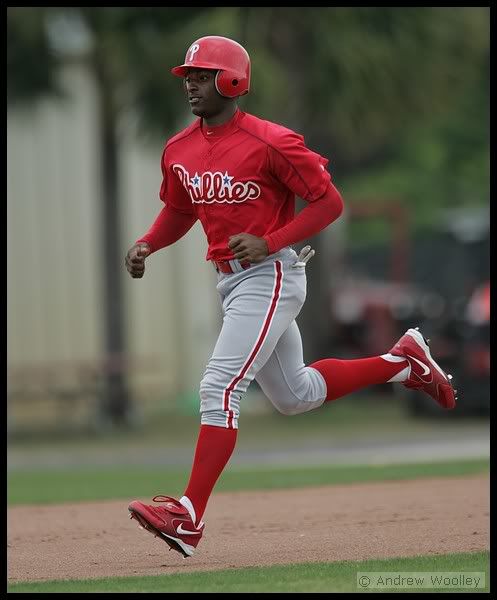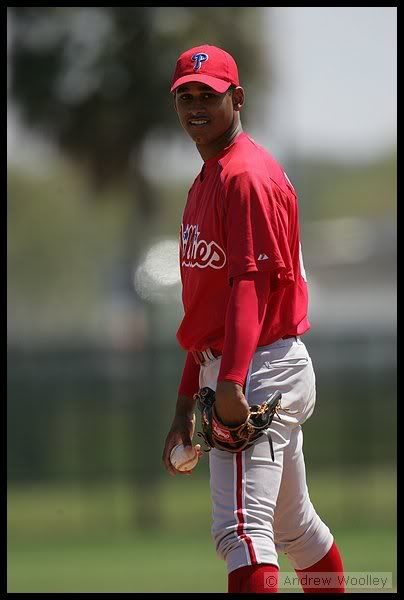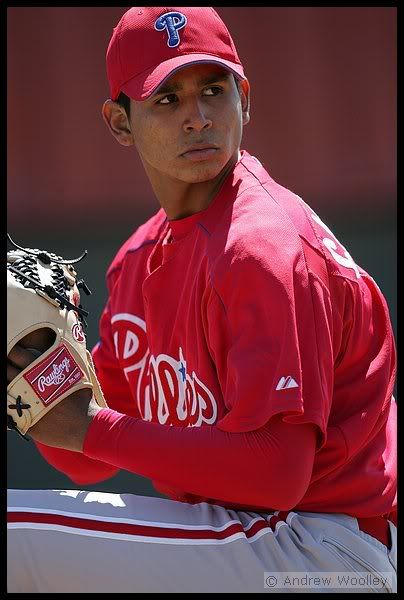Prospect #1--Ryan Howard
1. Ryan Howard, 1B, SWB, 25
How acquired: Draft 2001, Rd. 5
Percentage chance of playing in the majors in the future: 100%
Ceiling and chances of reaching it: Major League Allstar, 40%
Career Minor League OPS: .901
6/30 Minor league OPS: 1.166
Comparable major Leaguers: Paul Konerko, Mo Vaughn, Charlie M: Willie Stargell
Image(s):

My comments: There's not much to say about Ryan Howard that posters here don't know already. He is a large but fairly agile first baseman with prodigious power to all fields, a very high strikeout rate, decent patience, deceptive basepath speed, and a remarkably high batting average on balls in play. Howard has never had trouble moving up levels in the minors, which bodes well for his transition to the big leagues. He's made adjustments to the pitching at each level quickly, and changed his game a bit as he advanced (he's much more selective now than last year, for instance, and he hits breaking balls better than he did in Reading and CLW). SWB manager Gene Lamont: "I've managed in the minor leagues a long time, and Ryan is the best power hitter I've ever had. There have been times this season when the expectations were such that he'd hit a home run every time he came up." Arbuckle on Howard being blocked in AAA: "I know this is tough for the player, but it's good for the club. I wish we had the same situation at four other positions. It's comforting to know Ryan is sitting here. If you move a guy like him, you have to get a lot back. You probably want to send him to the other league so you don't face him all the time. And you probably want to get a player with a similar ceiling at a similar age, not a rent-a-player or a guy two years from free agency. There aren't many guys in that category." Howard on his goals and mentality: "For me, it's all about getting up there. I want an opportunity. If it's with the Phillies, that's great. If not, that's O.K., too. I am just trying to stay the course and not get distracted. Someday, I think I'll look back on this as a time of patience."
















